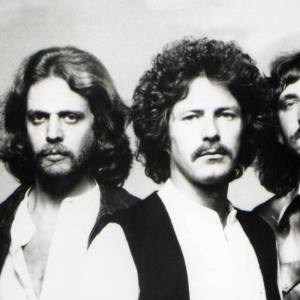Nick Lowe’s 1979 power-pop hit, “Cruel to Be Kind,” sounds oxymoronic. You’ve gotta be cruel … to be kind? But the meaning behind the song doesn’t deal with some backward wisdom on kindness. It instead deals with heartache, despite the tune’s bright jangle.
Videos by American Songwriter
The deceptively cheery song is about a lover at his wits’ end because of his companion’s blatant disregard for his feelings. It is about cruelty over kindness and the things we do and say in the name of … love?
The Origins
If the song’s name evokes memories of sophomore year summer reading, it’s because it was taken from a phrase written by Shakespeare, who used it in his classic work Hamlet. “I must be cruel only to be kind, thus bad begins and worse remains behind,” the saying reads. But that’s as far as the Shakespearian inspiration goes. The tune was instead inspired by another.
[RELATED: Nick Lowe Delivers Charming, Chimin]
“As a ’70s pub-rock band, it was kind of taboo for us to admit to liking disco,” Lowe once told The Guardian, “but we were fans, and I was in love with Harold Melvin and the Blue Notes’ ‘The Love I Lost.’ So the original version of ‘Cruel to Be Kind’ was my attempt at a floor-filler for when we played clubs and freshers’ balls.”
Listen to the 1973 R&B classic that inspired “Cruel to Be Kind.”
Lowe originally recorded an unreleased version of “Cruel to Be Kind” during his time in the English pub rock outfit, Brinsley Schwarz. He and his Brinsley Schwarz bandmate, Ian Gomm, penned the tune together.
When Lowe left the group and signed to Columbia Records, his A&R rep Gregg Geller came across the unreleased material and, for months, insisted the artist re-record the song.
“Each time he rang me, he’d mention ‘Cruel to Be Kind,'” Lowe explained. “But by 1979, I was this hip new wave producer who’d worked with Elvis Costello, Graham Parker and the Damned, and the song sounded embarrassingly pre-new wave to me. So I’d respond unenthusiastically. ‘Oh yeah, you like that, Gregg? Great. But I’ve got a better song here about a woman who was eaten by her dog.'”
He eventually and begrudgingly re-record the track, releasing it as a single in 1979. “Cruel to Be Kind” would become the artist’s most successful release in the U.S.
The Lyrics
Oh, I can’t take another heartache, the song opens against an upbeat backdrop of crisp drum hits and bright strums. The song’s meaning often gets hidden underneath the delightful composition, but those first lyrics set the stage. Though you say you’re my friend / I’m at my wits’ end / You say your love is bonafide / But that don’t coincide / With the things that you do / And when I ask you to be nice, you say…
The narrator is through with his lover’s antics. They do things that don’t coincide with what they say, things that don’t resemble love whatsoever, making for a frustrating back and forth that eventually gets chalked up to:
You’ve gotta be cruel to be kind in the right measure
Cruel to be kind, it’s a very good sign
Cruel to be kind means that I love you, baby
(You’ve gotta be cruel)
You’ve gotta be cruel to be kind
A flourish of emphatic doo-doo-da-doo-doos as the chorus plays again mask the song’s truly desperate meaning. The singer pleads and reasons, crooning Well, I do my best to understand, dear / But you still mystify / And I want to know why / I pick myself up off the ground / To have you knock me back down / Again and again / And when I ask you to explain, you say…
Again, their only response is You’ve gotta be cruel to be kind.
Photo by Fin Costello/Redferns
